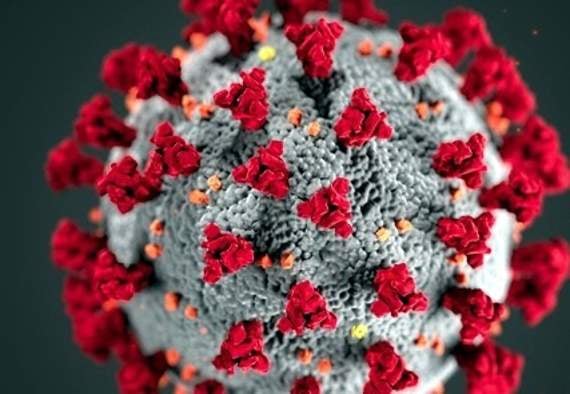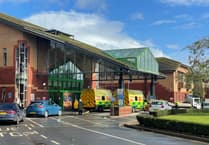South Hams has seen a fall in the number of COVID-19 cases this week, official figures show.
The number of coronavirus cases confirmed across Devon and Cornwall has also fallen in the previous seven days.
A total of 4,390 new cases were confirmed across the two counties in the last week as the total for the two counties now stands at 35,548 – the second highest weekly figure.
But the number of cases in Cornwall, East Devon, Exeter, Mid Devon, North Devon, South Hams, Torridge and West Devon confirmed have fallen – even before the impact of Lockdown 3 has worked its way into the figures reported.
Due to the lag between infections, symptoms, tests and results, only now should the impact of Lockdown 3 make a difference in terms of the number of new cases.
Government statistics show that 4,390 new cases have been confirmed across the region in the past seven days in both pillar 1 data from tests carried out by the NHS and pillar 2 data from commercial partners, compared to 5,120 new cases confirmed last week.
Of the 4,390 cases confirmed since January 8, 160 are in the South Hams, with 1,651 are in Cornwall, 345 in East Devon, 339 in Exeter, 170 in Mid Devon, 101 in North Devon, 801 in Plymouth, 333 in Teignbridge, 362 in Torbay, 62 in Torridge and 66 in West Devon.
This compares to the 5,120 cases confirmed between January 2 and 9, of which 2,212 were in Cornwall, with 379 in East Devon, 405 in Exeter, 255 in Mid Devon, 147 in North Devon, 710 in Plymouth, 202 in the South Hams, 312 in Teignbridge, 310 in Torbay, 100 in Torridge and 88 in West Devon.
By specimen date, cases are still rise in Plymouth, Torbay and Teignbridge, and relatively level in East Devon, Exeter, Mid Devon and West Devon. But they are falling already in Cornwall, North Devon, the South Hams and Torridge.
A total of 3,471 of the cases have a specimen date between January 8 and 14, with 1,346 in Cornwall, 270 in East Devon, 268 in Exeter, 130 in Mid Devon, 81 in North Devon, 650 in Plymouth, 137 in South Hams, 263 in Teignbridge, 282 in Torbay, 43 in Torridge and 61 in West Devon.
The latest positivity rates for tests carried out is at 6.2% in the South Hams.
As of Tuesday morning, there were 350 patients in hospital across Devon and Cornwall following a positive Covid-19 test, with 25 at Torbay Hospital (up from 20) and 72 in Derriford Hospital in Plymouth (up from 47), although not all patients are local given some have been transferred to the region from elsewhere.
The figures show the amount of patients in hospital following a positive COVID-19 test who are currently occupying a bed.
But not every patient would necessarily have been admitted to hospital due to COVID-19, with a number of patients either contracting the virus inside the hospital, or being admitted for unrelated reasons but subsequently testing positive asymptotically when given routine tests.
In terms of the latest MSOA cluster maps, that cover the period of specimen dates between January 4 and January 10, there are only two areas of Devon and Cornwall with between 0-2 cases – Fremington and Instow, and the Isles of Scilly, with Dartmouth currently the highest cluster in South Hams with 38 cases.
In terms of infection rates per age range, case rates are highest in the over 80s age range, with one in five case in Devon having been confirmed in care homes. East Devon, Exeter and Teignbridge have case rates highest in the over 80s, but everywhere else in the 20-39 age groups.
It comes as Steve Brown, Director of Public Health Devon, has pleaded with residents to follow the new national lockdown restrictions.
He said: “We are seeing increasing in outbreaks in care home and have had some significant outbreaks with 70 or 80 per cent of residents or staff testing positive. Some are asymptomatic but some have symptoms and in hospital, and about 20 per cent of Devon’s cases are care homes.
“It is important to re-emphasise the stay at home message and to stay at home unless it is essential to go out, but every time you leave the front door, you risk coming into contact with someone who may have Covid and could be a crucial link in chain of transmission.”
The COVID-19 cases are identified by taking specimens from people and sending these specimens to laboratories around the UK to be tested. If the test is positive, this is a referred to as a lab-confirmed case.
Confirmed positive cases are matched to ONS geographical area codes using the home postcode of the person tested.
Cases received from laboratories by 12.30am are included in the counts published that day. While there may have been new cases of coronavirus confirmed or people having tested positive, those test results either yet to reach PHE for adding to the dataset or were not received in time for the latest daily figures to be published.



